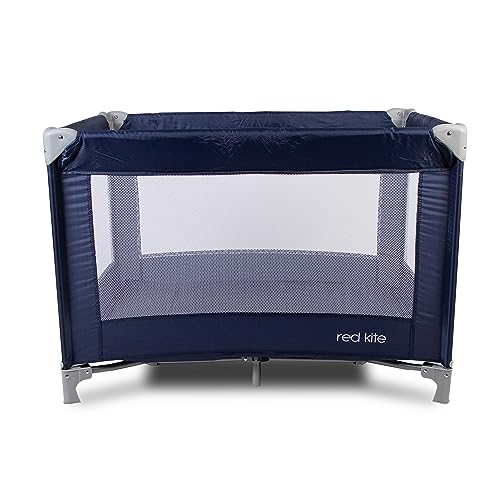Five Killer Quora Answers To Tots And Cots
페이지 정보
작성자 Ulysses Spady 댓글 0건 조회 0회 작성일 25-08-04 16:48본문
Tots and Cots: A Comprehensive Guide for Parents
When it comes to guaranteeing a safe and comfy sleeping environment for children and toddlers, the options parents make-- ranging from cribs to cots-- can significantly affect their well-being. Today's post dives deep into the intricacies of selecting the best sleeping plans for tots, stressing safety, design, functionality, and how these choices evolve as a kid grows.
Comprehending Tots and Cots
tots And cots typically describe young children, especially young children aged between 1 to 3 years, while cots are the sleeping plans particularly created for infants and toddlers. The proper sleeping devices for this age consists of various types of cots, cribs, and young child beds.
Types of Cots
Various styles exist to satisfy the diverse needs of both parents and kids. Below is a list laying out the most typical kinds of cots readily available:
Standard Crib
- A standard crib is developed for infants and usually includes sides that can be gotten used to various heights.
Convertible Crib
- This type of crib can transform into a young child bed, daybed, or full-sized bed as the kid grows, making it a long-lasting investment.
Portable Crib

- Also referred to as travel cots, these are light-weight and easily foldable, perfect for taking a trip or smaller living spaces.
Co-Sleeper
- A co-sleeper crib connects to the side of the moms and dads' bed, allowing for simple gain access to while guaranteeing the baby has a separate and safe sleeping area.
Toddler Bed
- A young child bed is a little bed that looks like a basic bed but is developed particularly for young children, typically including safety rails.
Mini Crib
- Mini cribs are smaller sized than standard cribs, making them a terrific choice for tight areas, but they are suitable for babies only.
Security Considerations
Ensuring security is critical when picking a cot for a child. Here are crucial safety standards moms and dads need to consider:
- Check for CPSC Certification: Ensure that the cot complies with the Consumer Product Safety Commission (CPSC) standards.
- Avoid Drop-Sides: Cots with drop-sides have actually been connected to safety hazards, and the most recent safety regulations forbid them.
- Utilize a Firm Mattress: A company mattress minimizes the threat of suffocation and must fit snugly within the cot.
- Keep Bedding Simple: Use a fitted sheet and prevent pillows, comforters, and stuffed animals that can position suffocation threats.
- Follow Weight and Age Guidelines: Ensure the child has actually not gone beyond the cot's weight limitation and is still within the suggested age.
Transitioning from a Cot to a Toddler Bed
The shift from a cot to a toddler bed can be an emotional milestone for both parents and children. Here are actions to reduce the shift:
Timing
Choosing when to shift can be subjective, however it's generally advised to make the switch in between 18 months and 3 years, based upon aspects like:
- Physical Ability: If the child is climbing out of the cot.
- Potty Training: Consider transitioning if the child is potty training and requires simpler access.
- Habits: Exhibiting signs of maturity, such as following directions or expressing a desire for self-reliance.
Tips for Making the Transition Smooth
Involve Your Child: Let the kid choose their new bedding or bed decoration to instill enjoyment about the change.
Keep Routine Consistent: Maintain the child's bedtime regimen to provide comfort during this duration of modification.

Discuss the Change: Discuss the transition to a young child bed favorably, making it seem like a fantastic adventure.
Safety Measures: Place the bed against the wall or use bed rails to prevent falling throughout sleep.
Picking the Right Bed
When choosing a young child bed, parents need to consider factors like:
- Height: Low-profile beds are ideal for young children who may fall out throughout sleep.
- Toughness: Ensure the bed can endure active play along with sleep.
- Design and Design: Choose a design that complements the kid's space and is interesting the child.
Selecting the right cot for your kid can be a difficult procedure, however comprehending the choices readily available, crucial security factors to consider, and the right timing for transitioning to a young child bed can make this journey much easier for parents. Investing time and effort into these decisions will make sure that your kid has a safe, comfy, and nurturing sleep environment.
Frequently asked questions
1. What is the difference in between a cot and a crib?
- A cot is normally a smaller bed designed for more youthful young children, while a crib is a larger bed that is usually appropriate for infants approximately 3 years old.
2. When should I move my child from a crib to a young child bed?
- The shift time is normally between 18 months and 3 years; this modification is based upon the kid's physical capabilities and behavioral signs.
3. How can I ensure my kid is safe while sleeping?
- Constantly stick to security standards, use a firm bed mattress with an easy bed linen arrangement, and keep track of the cot's weight limit.
4. What should I do if my child attempts to climb out of the cot?
- If your child is climbing up out, it may be time to consider transitioning to a toddler bed to avoid falls.
5. Can I utilize the exact same mattress when transitioning?
- Usually, it is best to replace the crib bed mattress with one that is specific to the young child bed. Ensure it fits comfortably and follows safety requirements.
By considering these aspects, parents can model healthy sleep habits and provide their kids with a protected environment that promotes relaxing sleep. Buying quality sleeping arrangements will add to the child's total advancement and joy.

